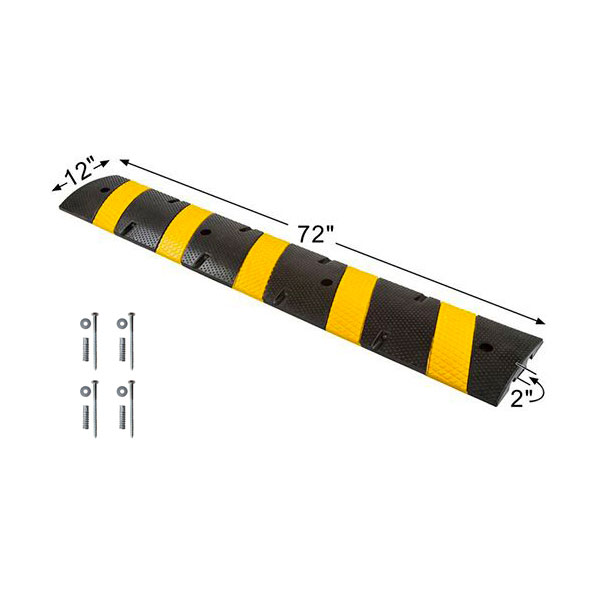Learn the key differences between speed humps and speed bumps, their effectiveness in reducing speed and accidents, and the potential problems they can cause. Find out which traffic calming measure is best for your community.
I. Introduction
A. Definition of Speed Humps and Speed Bumps
Speed humps and speed bumps are traffic calming measures designed to slow down vehicles in residential areas and near places with high pedestrian activity, such as schools and parks. B. Purpose of Speed Humps and Speed Bumps The purpose of speed humps and speed bumps is to reduce the speed of vehicles in areas where there is a high risk of accidents involving pedestrians. This can improve safety for both drivers and pedestrians, as well as help to reduce noise pollution and damage to cars.
II. Differences between Speed Humps and Speed Bumps
A. Physical Differences:
Speed humps are longer and wider than speed bumps, with a gradual incline and decline. They are typically about 3-4 inches high and 12-14 feet long. Speed bumps, on the other hand, are shorter and steeper, with a height of about 1-2 inches and a length of 3-5 feet.
B. Effectiveness:
Speed humps are generally considered to be more effective at slowing down vehicles than speed bumps, as they force drivers to slow down more gradually. However, speed bumps can also be effective in certain situations, such as in areas with low traffic volume or where there is a need to control access to a specific area.
C. Cost
Speed humps are typically more expensive to install than speed bumps, due to their longer and wider design. However, they can also last longer and require less maintenance over time.
III. Effectiveness of Speed Bumps
A. Studies on Reduction of Speed
Studies have shown that speed humps and speed bumps can be effective at reducing the speed of vehicles in residential areas and near places with high pedestrian activity.
B. Impact on Accidents
Speed humps and speed bumps can also have a positive impact on accidents, as they can help to reduce the risk of accidents involving pedestrians.
C. Alternative Methods
There are also alternative methods to speed humps and speed bumps that can be used to slow down traffic, such as roundabouts and traffic circles.
IV. Conclusion
A. Summary of key points
Speed humps and speed bumps are traffic calming measures designed to slow down vehicles in residential areas and near places with high pedestrian activity. They have different physical characteristics and cost, but both are effective in reducing the speed of vehicles.
B. Recommendations
Before deciding which traffic calming measure to use in a particular area, it is important to consider factors such as traffic volume, pedestrian activity, and the specific needs of the community.
C. Additional Resources
For more information on speed humps and speed bumps, as well as alternative traffic calming measures, additional resources are available from organizations such as the National Transportation Safety Board, the Federal Highway Administration, and the National Association of City Transportation Officials.
